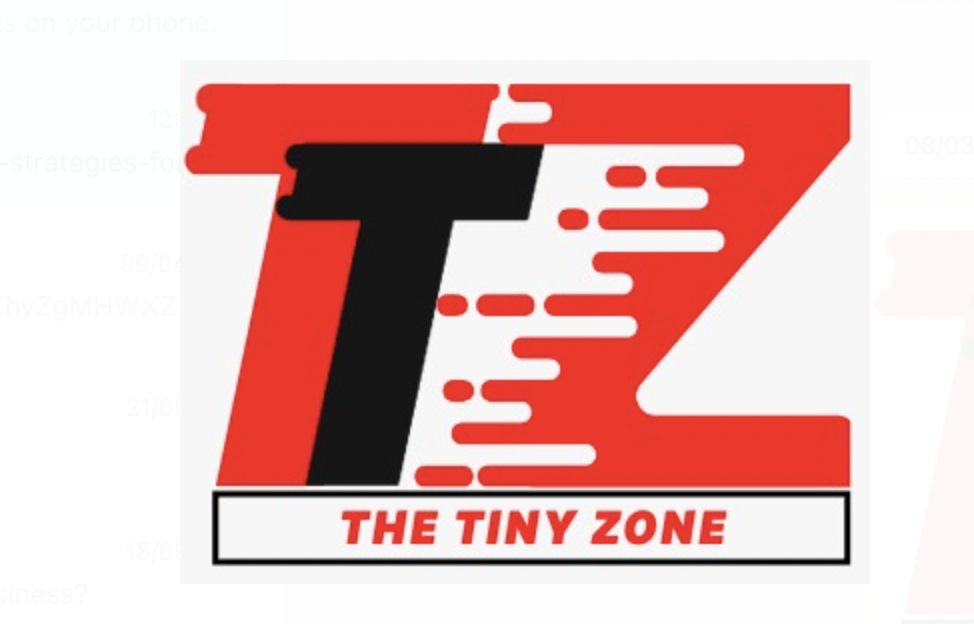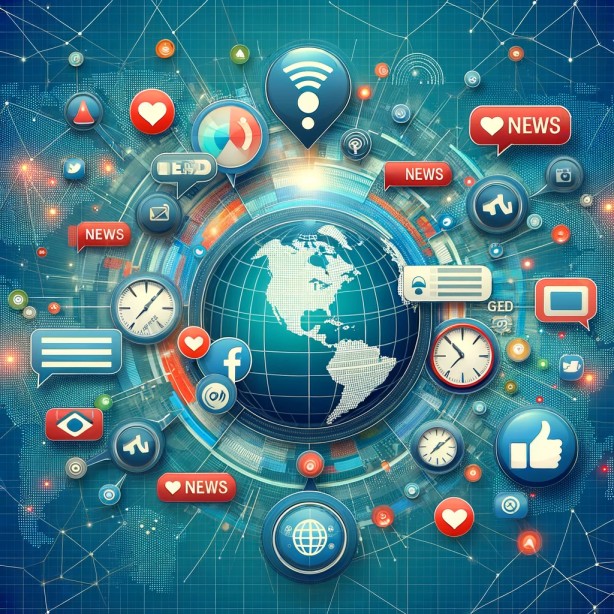Introduction
Social media has become a ubiquitous part of modern life. Platforms like Facebook, Twitter, Instagram, and Snapchat have billions of users across the globe. An integral part of these platforms is their role in disseminating digital Marketing news alerts. News organizations leveraged social media to spread information rapidly to a wide audience. However, the integration of news alerts into social media has also raised concerns around the credibility, transparency, and ethics of how news spreads online. This essay will provide an in-depth analysis of DigitalNewsAlerts in social media and their far-reaching impact on society.

Blending News and Social Interaction
One of the defining aspects of social media platforms is how they blend news consumption with social interaction. Unlike traditional news mediums like print, radio, or television, social media allows users to not just passively receive news but actively engage with it. There are several ways social media facilitates the blending of news alerts and social engagement:
- Sharing – All major social media platforms make it easy for users to share news alerts they receive. This takes news that would have previously remained in the hands of editors and makes it participatory. Users disseminate alerts to their own social circles.
- Discussion – Social platforms are inherently designed to foster discussion. Users can comment on news alerts, opening up conversational threads around the issues raised. This creates interactive spaces for analysis and debate.
- Feedback Mechanisms – Features like “liking”, upvoting, reacting, and retweeting on platforms provide users with feedback mechanisms to express their views on news alerts. This level of engagement was missing from traditional news distribution.
- Multi-Media Integration – Social platforms allow news alerts to seamlessly integrate text, images, video, and audio. This multi-media approach appeals to different learning styles and makes the content more engaging.
- Personalization – Social media platforms use advanced algorithms to deliver personalized news feeds to each user based on their interests and engagement. This tailors news alerts to individuals.
This rich blending of news and social interaction creates a sticky engagement with the news that traditional mediums did not offer. However, it also poses risks in how news spreads as social engagement can amplify misinformation.
DigitalNewsAlerts in future

The integration of DigitalNewsAlerts in future with social media has fundamentally disrupted news consumption. As technology continues to advance, several emerging trends will likely shape the future of how we receive and interact with news.
DigitalNewsAlerts Trends and Predictions
Some of the key predictions for the future of news alerts in social media include:
- Increasing personalization – Platforms will leverage more user data and AI to deliver hyper-targeted news alerts aligned with specific individual interests and needs.
- Expansion of immersive technology – Virtual reality, augmented reality, 360 videos, and spatial audio will make news alerts more immersive, interactive and engaging.
- Growth of smart devices – News alerts will spread rapidly across interconnected smart home devices, wearables, smart cars, and voice assistants.
- Rise of messaging apps – Messaging apps like WhatsApp will emerge as key platforms for news alerts, leveraging strong user bases and engagement.
- Blockchain integration – Blockchain technology will increase transparency around source provenance and credibility of news alerts.
- Declining organic reach – Social platforms will continue tweaking algorithms to decrease organic reach, pushing news organizations to invest more in paid promotion.
- Consolidation – Industry consolidation will see a few mega platforms like Facebook, Google, Apple, and Amazon dominate news alerts distribution.
- Increased multi-media – Short entertaining video clips and podcasts will become more prominent as part of news alerts packaging.
Role of Emerging Technologies
Several emerging technologies are poised to disrupt news alerts over the next decade:
- AI Curation – Artificial intelligence will play a bigger role in personalized curation of news alerts for each user based on their interests, habits, and network.
- AR/VR – Immersive technologies like augmented reality and virtual reality will provide more interactive news alerts, transporting users to relevant locations and scenarios.
- Voice Assistants – Smart speakers and voice assistants will become key platforms for audio-based news alerts integrated into daily routines.
- 5G Networks – Faster 5G networks will support bandwidth-heavy applications like AR/VR news experiences and real-time video streaming alerts.
- Blockchain – Blockchain has the potential to embed source provenance and credibility into news alerts, reducing fake news and improving transparency.
- Internet of Things – Internet-connected devices will enable news alerts to reach users seamlessly via smart home appliances, cars, wearables and more.
Harnessing these emerging technologies in ethical and inclusive ways will shape the landscape for news alerts. But they also pose risks around issues like privacy, manipulation, and misinformation.
DigitalNewsAlerts Ethical Considerations
While social media opens up new avenues for news alerts, it also raises ethical questions that require deliberation. Some of the key ethical considerations include:
DigitalNewsAlerts Privacy Concerns
- Social platforms accumulate huge amounts of user data – likes, shares, clicks, locations, messages etc. – that provide insights into personalities and behavior patterns. There are fears this “surveillance capitalism” business model compromises privacy when leveraged for targeted news alerts.
- Advanced tracking techniques like web beacons, cookies, and fingerprints identify users across sites. This raises privacy issues around how much user data is harnessed for news alerts personalization.
- Lack of transparency around how algorithms personalize news feeds makes it unclear how much private data factors into tailored news alerts.
- Personally identifiable data could be compromised if not properly secured or anonymized by platforms.
DigitalNewsAlerts News Bias and Manipulation
- The selective curation of news alerts via opaque algorithms can reinforce bias. It risks creating dangerous filter bubbles and echo chambers.
- Platforms could prioritize profit over public good, pushing sensationalized or polarized news alerts over factual information. This distorts the news landscape.
- Monetization incentives may pressure news organizations to produce clickbait headlines and sensationalized alert copy to game the algorithm even if it deteriorates content quality.
- State or political actors could leverage bots and fake accounts to artificially amplify or suppress specific news alerts as disinformation tactics.
- Lack of source transparency on viral user-generated content makes it hard to discern misinformation from legitimate news alerts on social platforms.
User Engagement with Digital News Alerts
Social media transforms news alerts from passive one-way communication to multi-directional engagement between news providers and consumers. Some of the ways social platforms enable greater user engagement with news alerts include:
Interactivity and Feedback Mechanisms DigitalNewsAlerts
- Comment threads below news alerts allow users to discuss the news, ask questions, post reactions, and provide feedback. This interactivity was absent from traditional news formats.
- Buttons to like, upvote, react, retweet etc. provide direct feedback signals on people’s sentiment towards news alerts.
- Polls and surveys can be integrated with news alerts, allowing followers to directly vote on issues raised in the news.
- User-generated content like pictures, videos, and first-hand accounts complement news alerts with perspectives from the public.
- Chatbots allow users to ask questions and get automated information on news alerts topics.
Community Building DigitalNewsAlerts
- Hashtag threads around major news events bring together users interested in the issues, fostering issue-based communities.
- Users can follow influential thought leaders, journalists, and news organizations covering their areas of interest to get curated news alerts.
- Direct messaging features enable users to privately discuss news alerts within their own social circles rather than public comment threads.
- Groups and forum features on platforms provide semi-private spaces for niche communities to analyze news alerts on focused topics.
- Comments and forums on news alert posts aggregate analysis from a spectrum of perspectives beyond just the reporting organization.
This increased interactivity between news providers, influencers, and the public has meaningful impacts on civic discourse and community engagement with news.
DigitalNewsAlerts Impact on Society and Culture
DigitalNewsAlerts spread rapidly through social platforms, shaping public opinion and culture. Some of the profound impacts include:
DigitalNewsAlerts Shaping Public Opinion
- Virality of news alerts influences which issues garner mass awareness. The #BlackLivesMatter protests were fueled by viral videos of police brutality.
- Agenda setting power shifts from traditional media gatekeepers to masses as any user can broadcast news alerts to millions.
- Bandwagon effect of liking patterns sways perceptions on whether viewpoints expressed in news alerts have consensus.
- Comment sentiments shape first impressions of news alerts before even reading the full article.
- News alerts spreading misinformation can quickly spiral as users mimic opinions of those in their social circles without verification.
DigitalNewsAlerts Literacy
- With information overload from continuous news alerts, people need skills to manage their consumption and avoid burnout. For instance, turning off notifications for a digital detox.
- As news alerts integrate AR/VR elements, users will need spatial literacy skills to interpret information encoded in immersive environments.
- Data literacy around algorithms, bots, deepfakes etc. helps reveal techniques to manipulate virality of specific news alerts.
- Verifying sources cited in news alerts will be crucial as manipulated video/audio makes it harder to trust media at face value without cross-checking.
- Cultural literacy provides context to analyze global news through diverse perspectives, recognizing framing and biases. This is especially important as news alerts spread internationally.
DigitalNewsAlerts Impact on Journalism
- Mainstream media outlets have adapted practices to optimize news alerts for social distribution, prioritizing shareability and engagement over nuance.
- Competition to gain traction for news alerts online pressures journalists to develop social media branding and craft catchier headlines.
- Declining ad revenues for long-form reporting incentivizes clickbait news alerts optimized to game the algorithm rather than provide public service.
- Social metrics like retweets and follower counts confer influence, shifting power dynamics between journalists and audience engagement.
- Blurring of professional reporting and amateur eyewitness news alerts requires new ethical norms around curation, verification and attribution.
Does this help provide additional details on the societal impacts of digital news alerts? Let me know if you need any clarification or have additional questions.


